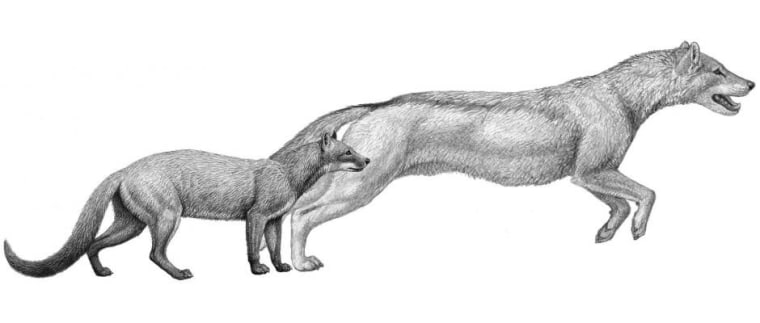It turns out old dogs — prehistoric ones, even — can learn new tricks. It just takes a few million years. A new study of American dog fossils shows that climate change and resulting habitat shifts drove native dogs, originally an ambush predator, to become the relentless trackers and pouncers we see today in wolves.
"It’s reinforcing the idea that predators may be as directly sensitive to climate and habitat as herbivores," said Brown University's Christine Janis, who worked on the study, in a news release.

Forty million years ago, a warmer and wetter climate meant a dense, extensive forest over much of what is now the Central Plains of the United States. It was a biome that lent itself to a smaller predator that could spring out of hiding and take down passing prey — which nicely describes native wild dogs of that period.
Related: 'Scarface': Dachshund-Sized 'Pre-Mammal' Roamed Earth 255 Million Years Ago
But as the area grew more cool and dry, those forests thinned out and in many places gave way to vast plains. Herbivores evolved along with it, and long-legged herd animals like bison and deer proliferated. But predators evolved too, as Janis and lead study author Borja Figueirdo, now at Spain's Universidad de Málaga, determined from close inspection of the fossil record.
The wild dogs' all-purpose forelegs became specialized for long-distance running: more support, less flexibility. And teeth became more durable, perhaps to deal with tough, dry hides or high-plains grit mixed in with the meat.
Related: Toothy Terror: Dinosaurs Like T. Rex Had Unique Serrated Teeth
Perhaps, the researchers suggest, the changes wrought by humans may lead to more shifts in predator physiology.
The study appeared Tuesday in the journal Nature Communications.
